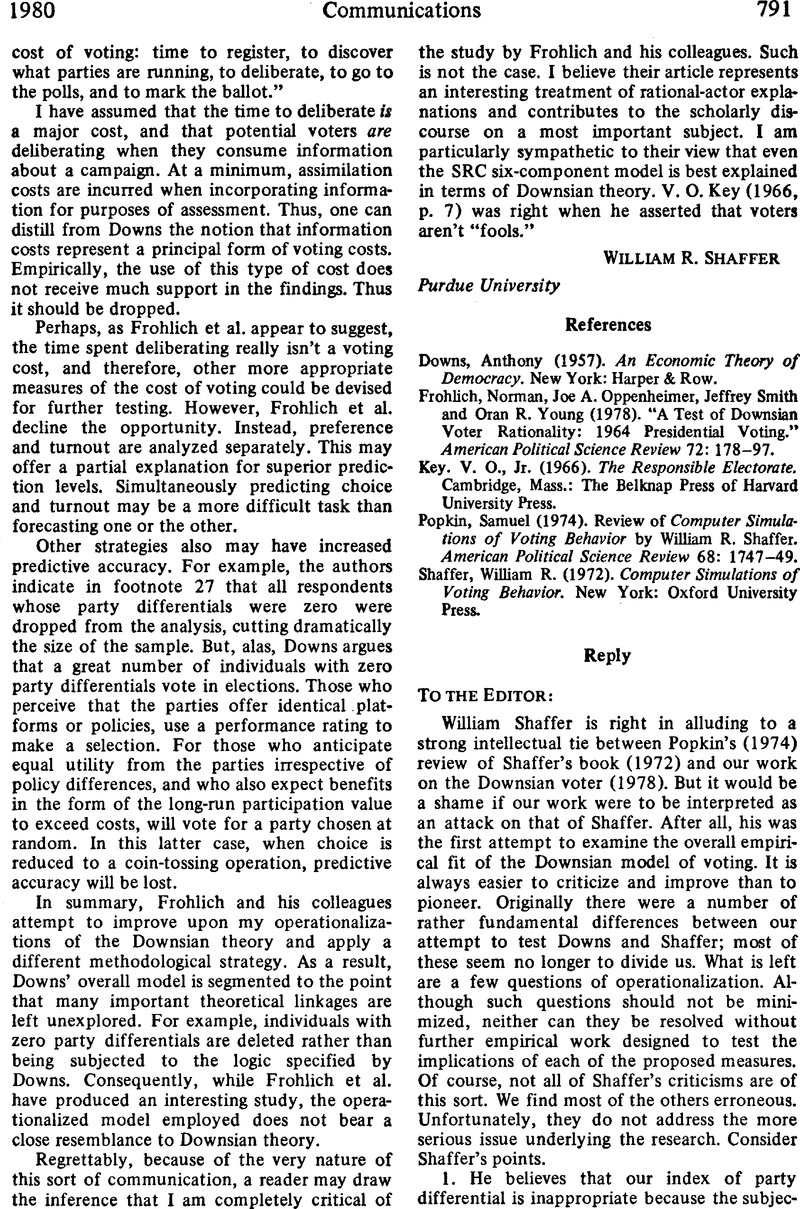No CrossRef data available.
Article contents
Reply
Published online by Cambridge University Press: 01 August 2014
Abstract
An abstract is not available for this content so a preview has been provided. Please use the Get access link above for information on how to access this content.

- Type
- Communications
- Information
- Copyright
- Copyright © American Political Science Association 1980
References
Frohlich, Norman, and Oppenheimer, Joe A. (1978). Modern Political Economy. Englewood Cliffs, N.J.: Prentice Hall.Google Scholar
Frohlich, Norman, Oppenheimer, Joe A., Smith, Jeffrey and Young, Oran R. (1978). “A Test of Downsian Voter Rationality: 1964 Presidential Voting.” American Political Science Review 72: 178–97.CrossRefGoogle Scholar
Grether, David M., and Plott, Charles R.. “Economic Theory of Choice and the Preference Reversal Phenomenon.” American Economic Review 69: 623–38.Google Scholar
Popkin, Samuel (1974). Review of Computer Simulations of Voting Behavior by Shaffer, William R.. American Political Science Review 68: 1747–49.CrossRefGoogle Scholar
Shaffer, William R. (1972). Computer Simulations of Voting Behavior. New York: Oxford University Press.Google Scholar



Comments
No Comments have been published for this article.